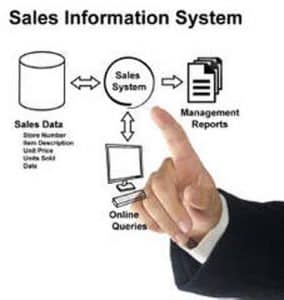Everyone wants to grow their business but sadly there’s no simple formula that guarantees growth. In fact, no amount of enthusiasm, passion, hard work or talent can guarantee business growth.
Attracting new customers is a great way to grow your business but you really want more of your ideal type of customer.
These customers might buy from you regularly, spend more money than your average customer and give you plenty of referrals. They might also pay their invoices on time!
To get results from your advertising and other marketing strategies it’s important to be clear on what type of customer you want to attract. Identify the characteristics of your best customers – their age, gender, income, location, or occupation. For business customers, consider their industry type, approximate revenue, location, and number of staff.
Be sure to ask your team’s opinions too and get them to break down the purchase history of these customers to identify how often they buy; their average spend and what products they prefer. If you know the habits of your ideal customers, you can tailor your marketing to win more of them. It’s a bit like fishing, if you know what type of fish you want to catch you use specific bait and tackle.
To win more new customers consider the following strategies:

1. TARGET MARKETING
You don’t necessarily want to market to everyone, so you need to focus your attention on winning your ideal type of customer. This could mean targeting a certain gender, age group, income level or people in a geographic location. The next question is, where do they ‘hang out’? It could be online and more specifically it could be on Facebook. The good news is Facebook lets you target groups with ads based on specific criteria so you can really hone in on your ideal customers with targeted ads.
For some businesses it makes sense to focus on niche markets. You could have expertise in a particular type of service or you may specialise in an industry. Either way, there are ‘riches in niches’ and you need to become a ‘visible expert’ which could mean speaking at industry conferences, writing articles in trade magazines or writing a series of blogs on your area of expertise.
If you don’t have a point of difference in your business, you’re probably only competing on price which is a recipe for disaster. What makes your business stand out in the crowd? Do you have a unique selling point (USP) that differentiates your business from your competitors? If nothing comes to mind it is time to think of ways you can differentiate your brand and communicate this to your target market. It could be the simplicity of your product, your guarantee or even your rewards program.
You need to understand your customer’s needs and preferences so you can market to their needs. Know your customer’s key frustrations and focus your marketing on the benefits you offer. Avoid just selling the product features and focus on the benefits your customer will derive from using the product.

2. REVIEW YOUR WEBSITE
Your website is your marketing heart and given the majority of people start their search online, it needs to be working 24/7 365 days of the year to promote your products and services.
All too often we find websites are just ‘electronic billboards’ that list the who, what and where of the business. Think about what you want the visitors to your website to do and make sure you guide them to take the next step with calls to action like – call us now, book a free meeting, call for a free quote or get a free product sample. Your website should generate leads which may require other features like social proof and testimonials, videos, a blog, e-books, and whitepapers.
There is no point having a great website if it is invisible to the search engines like Google. If you run a plumbing or electrical business where do you appear on a search for plumbers in your suburb? Search engine optimisation is a science, but you also need to build inbound links to your website, label images on your website with key words and create unique and relevant content that resonates with your target market. Your website should ‘talk’ to these prospects and tell them how you can help them solve their problems or fill their needs.
This is now an essential part of your marketing arsenal and YouTube is now the second largest search engine. Videos can bring more traffic to your website; reinforce your expertise and they may also give you a point of difference compared to your competitors. You don’t need expensive video cameras or big budgets to produce effective videos.
3. SOCIAL MEDIA
This is the digital ‘word of mouth’ and if your target market is people under 50 you simply cannot afford to dismiss channels like Instagram, Facebook, and Twitter etc. If you’re targeting 18–45-year-old customers, social media might be one of your most valuable marketing channels.
4. BUILD A LIST
Statistics show that 80% of sales are made after the fifth contact with a potential customer. For that reason, you need to keep building your list of prospects. One of the most important things your website should do is entice prospects to exchange their name and email address for a piece of your content. It could be an e-book, whitepaper, newsletter, checklist, or video but this allows you to build a pipeline of prospects and keep marketing to them. Remember, not everyone who lands on your website is ready to buy so building a list and adding them to future marketing campaigns is a key strategy to winning more new customers.

5. SALES SYSTEM/SALES INFORMATION SYSTEM
A systemised approach to selling based on an effective sales method is a must-have for increasing your customer database. To encourage your prospects to make a purchase you should automate and systematise the process, so your customers get a consistent and positive experience.
Projecting future sales is also part of increasing sales. It’s much easier to get to your destination if you know where you are going. Establish a goal or target so you can monitor your own performance. It could also mean identifying how many new customers you need to win each week or month. If you don’t measure you can’t manage.
Think about offering a truly competitive and meaningful guarantee or create irresistible offers that prospects simply can’t refuse. Add more value than your competitors, use direct mail including the 6 essential ingredients that make it work – a compelling headline, an offer, call to action, guarantee, text that explains ‘what’s in it for me?’ for the reader and excellent graphic design and layout.

6. NETWORKING
Finally, think about other ways to promote your business. There are so many options but start by focusing on where your ideal customers gather together. Join networks, update your LinkedIn profile, send out press releases regarding your new products or services, run webinars or seminars and don’t forget to encourage referrals. Think about creating reciprocal referral agreements with a non-competitive business who share the same type of target market. Hairdressers, nail technicians and beauty therapists are great examples.
SUMMARY
Attracting new customers is a great way to grow your business but you really want more of your ideal type of customer.
These customers might buy from you regularly, spend more money than your average customer and give you plenty of referrals.
For business customers, consider their industry type, approximate revenue, location, and number of staff.
If you know the habits of your ideal customers, you can tailor your marketing to win more of them.
To win more new customers, consider the 12 strategies mentioned above. This is just one way to grow your business and if you try implementing some of these ideas in the next few months, make sure you go back and measure the results.


